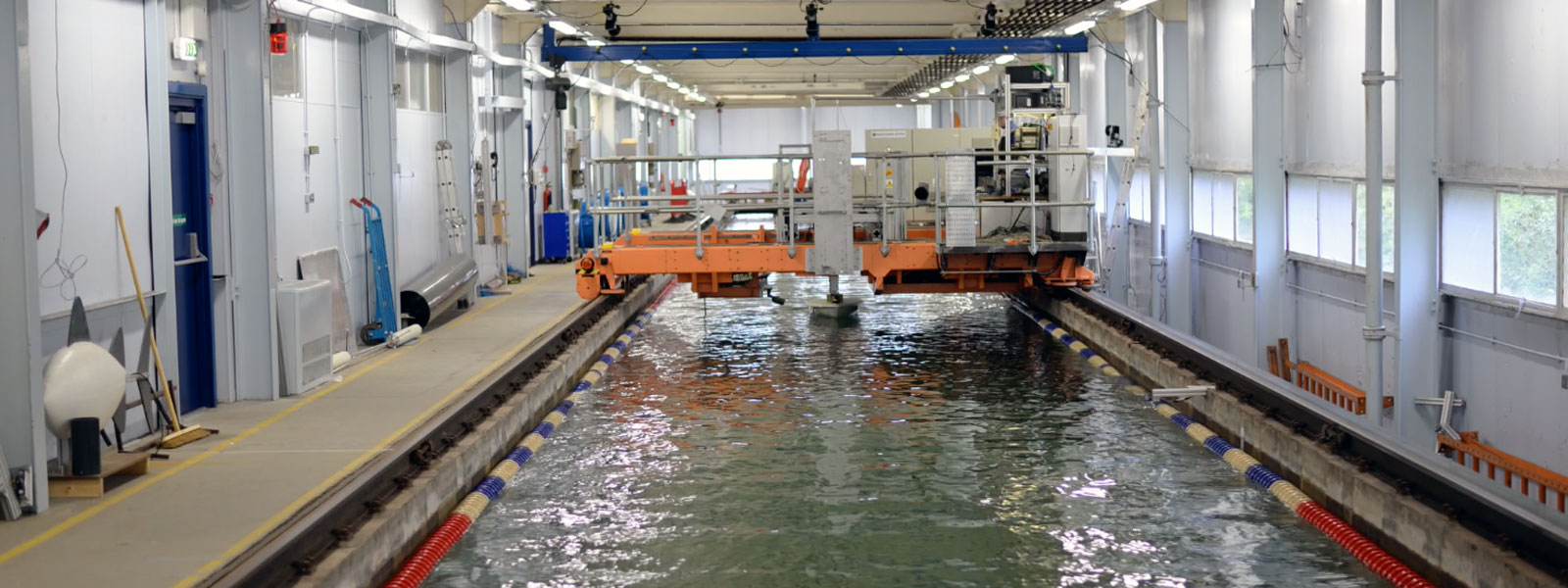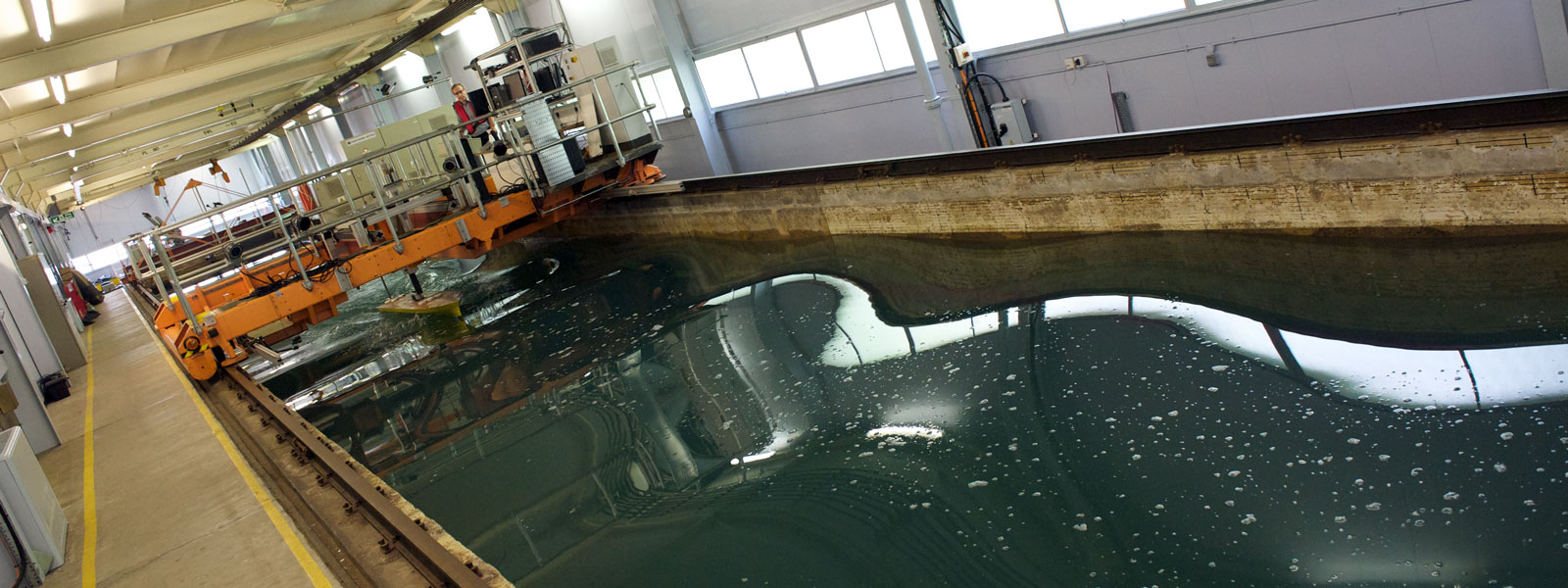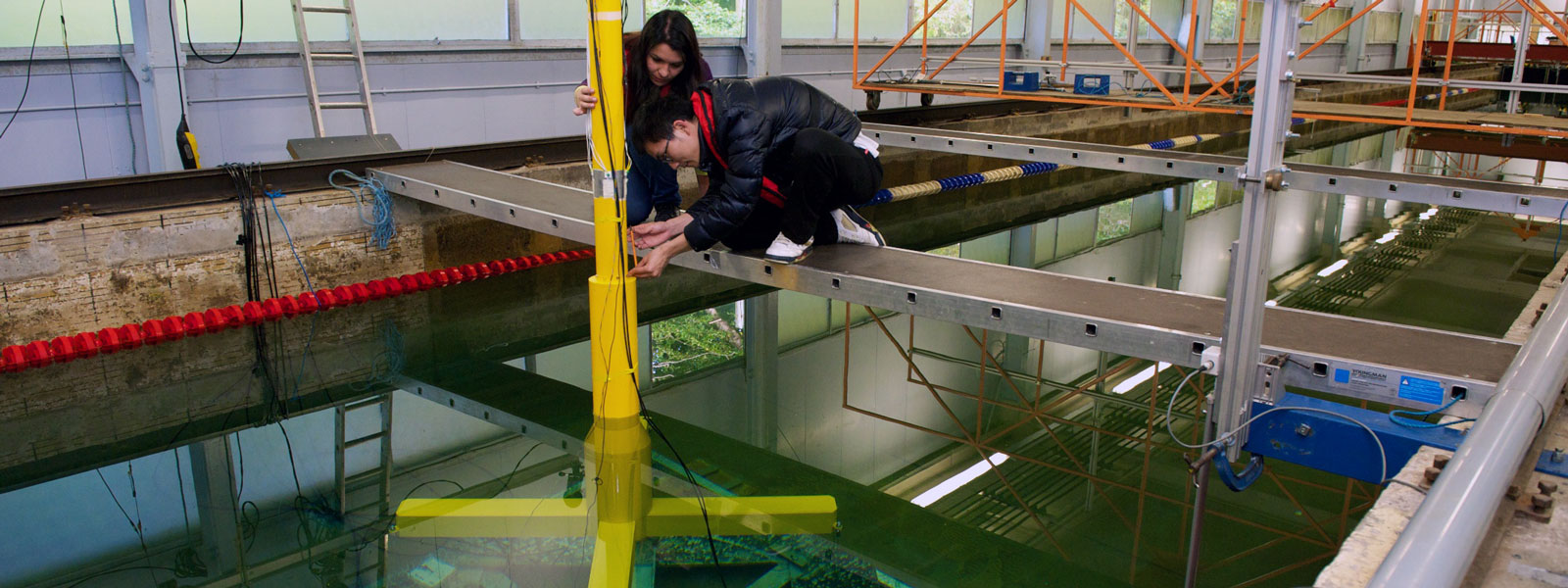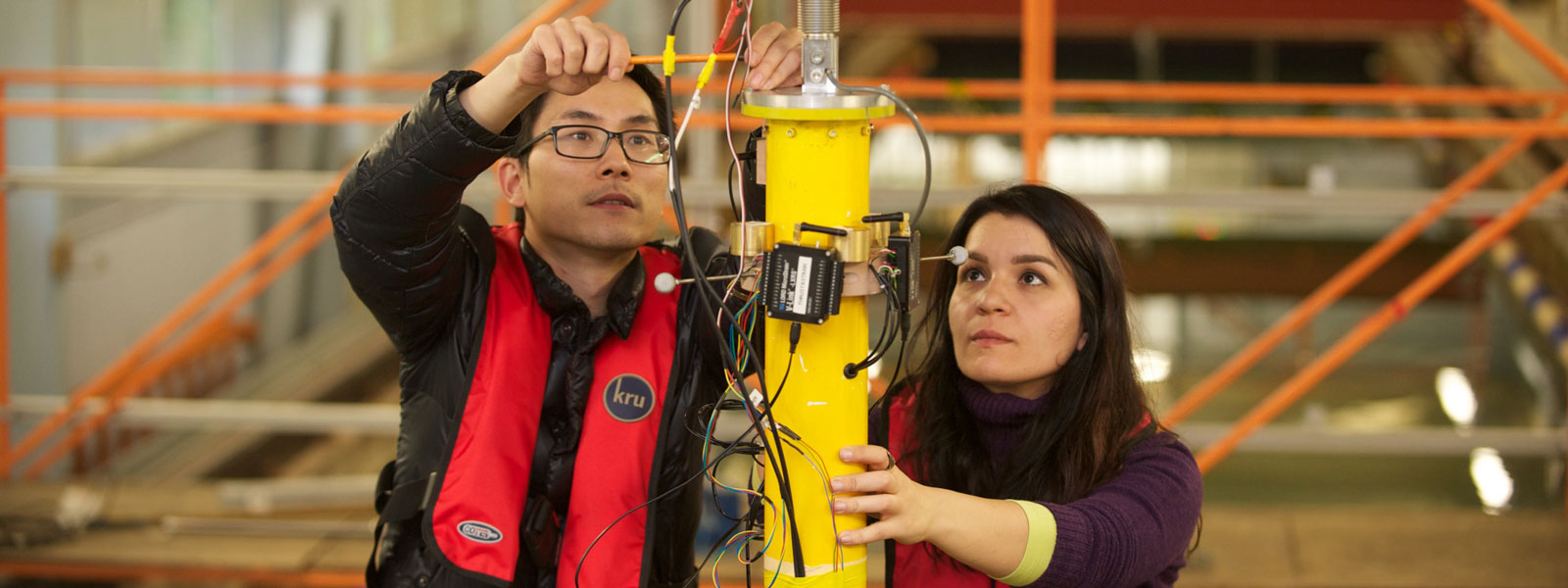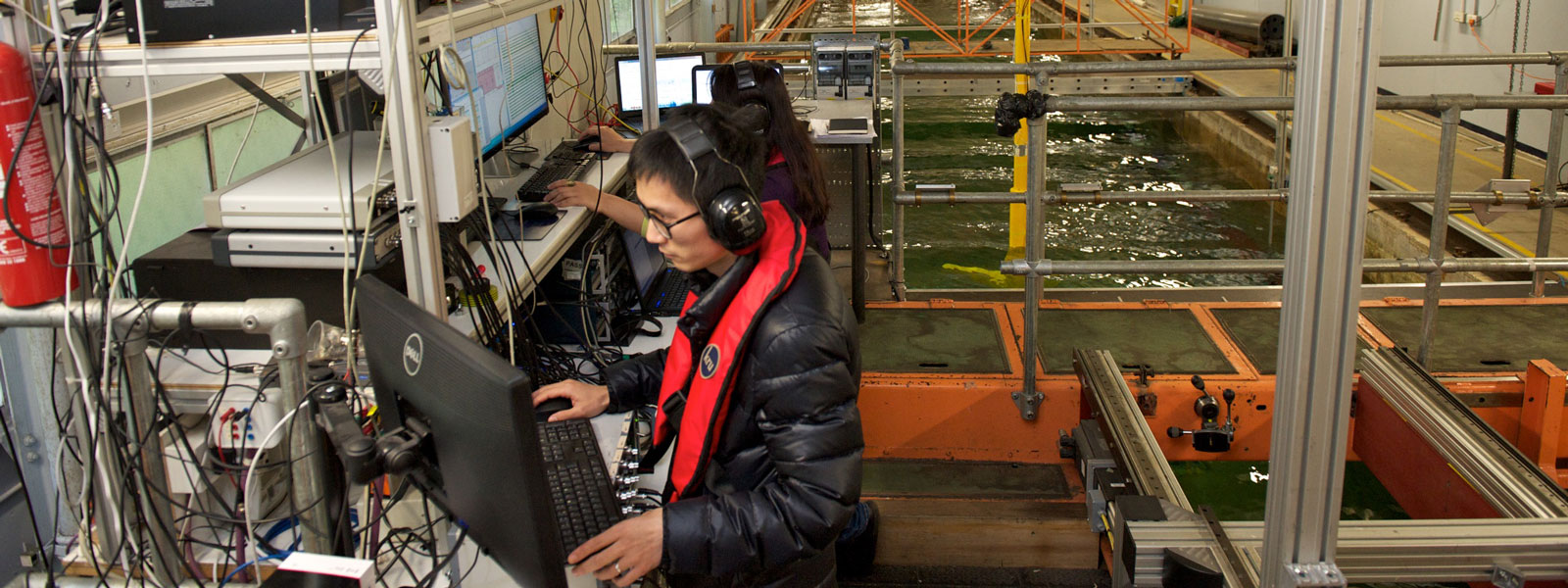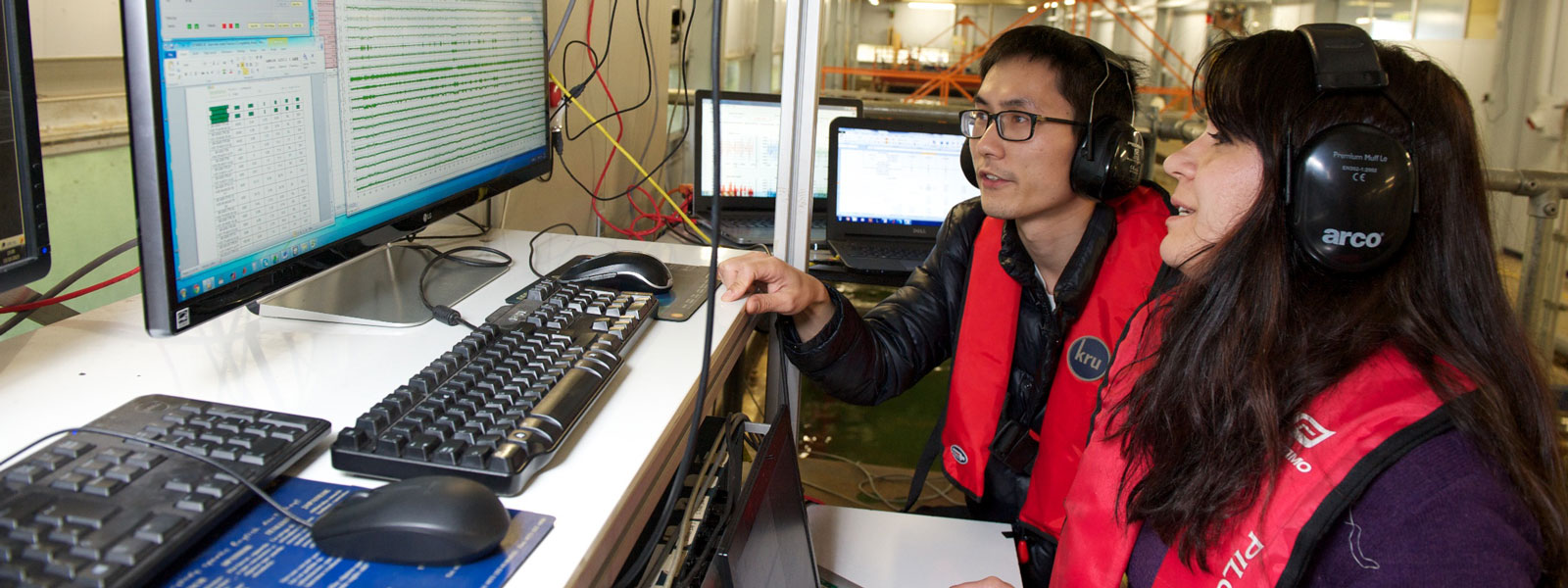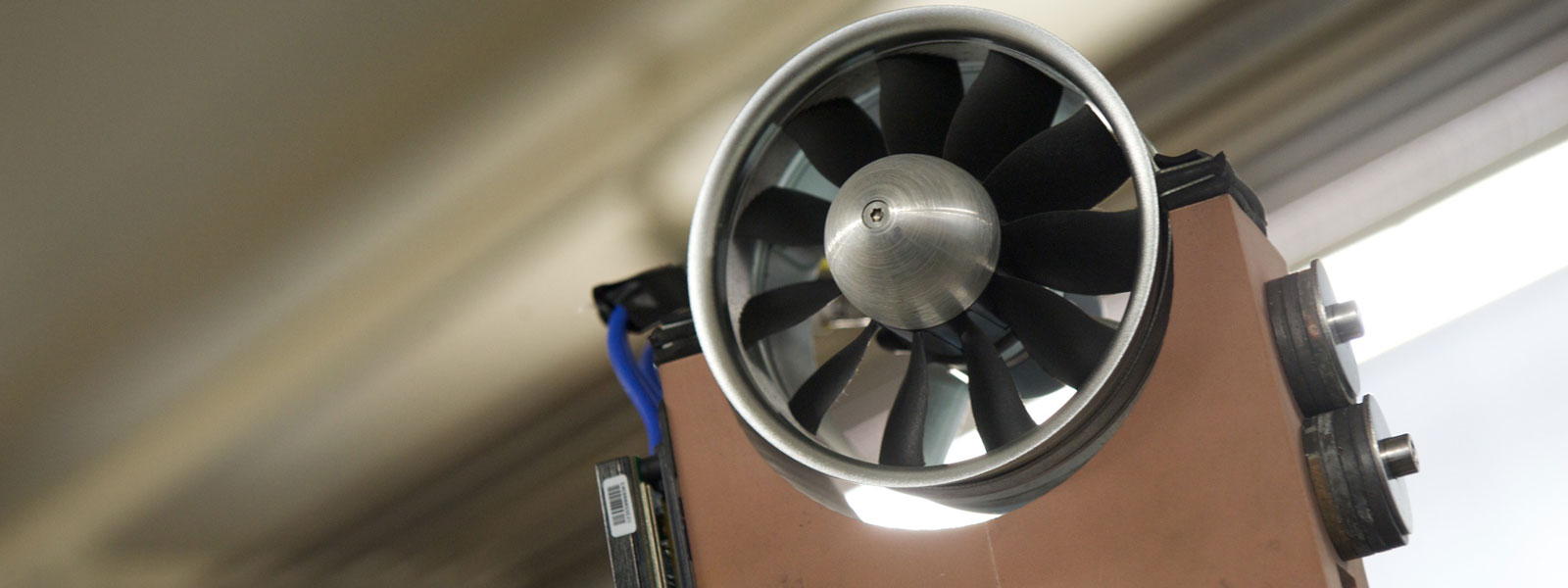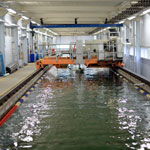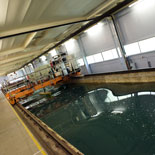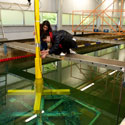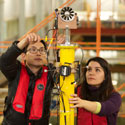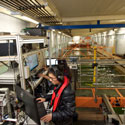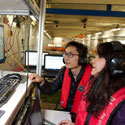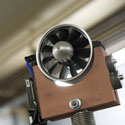We do the majority of our experimental research in the Kelvin Hydrodynamics Laboratory, It’s also used for undergraduate and postgraduate student project work, research projects and commercial testing.
Using this facility we can determine the seakeeping performance of floating wind turbine platforms (with or without aerodynamic loads), wave energy converter power extraction efficiency and floating structure’s survivability under extreme loading conditions. With self-propulsion dynamometer and the carriage, we can examine propulsion and resistance characteristics of ships. It is also ideal for large scale Under Water Vehicle tests.
We’re now one of the leading providers of testing services to the UK wind, wave and tidal energy industry. We provide repeatable and controllable conditions for testing of wind, wave and tidal energy devices on a moderate scale (1:50th to 1:25th scale depending on application).
The Kelvin Hydrodynamics Laboratory is located off campus, adjacent to the West of Scotland Science Park
Travel from the city centre or Glasgow airport will take around half an hour in a taxi.
What it's used for
We use the tank for a wide range of marine hydrodynamics tests including measurement of:
- ship resistance and sea-keeping
- unsteady motion of ships and floating bodies
- survivability of damaged ships
- hydrodynamics of towed surface-piercing and submerged bodies
- ocean engineering studies including vortex-induced vibration and vortex-induced motion
- wave impact and slamming studies
- marine renewable energy studies including device performance, maintainability and survivability
- sporting fluid dynamics
Specifications
Tank dimensions
- 76m x 4.6m x 2.5m
Carriage
- computer-controlled digital drive: max speed 5m/s. Equipped with digitally-controlled sub-carriage.
Wavemaker
- variable-water-depth computer-controlled four-flap absorbing wavemaker generating regular or irregular waves over 0.5m height (subject to water depth)
- high quality variable-water-depth sloping beach, with reflection coefficient typically less than 5% over frequency range of interest
Data acquisition
- PC based modular data acquisition/control system
- up to 64 input and 20 output channels, sample rate up to 60kHz
General details
The Kelvin Hydrodynamics Lab tank provides excellent conditions for measuring the performance of surface ships and a wide variety of floating and underwater structures.
Ship models used are up to 4m in length. High quality, single frequency waves and random sea states may be generated with wave heights over 0.5m.
The motions of floating vessels and structures are measured using a state-of-the-art, real-time, non-contact infrared camera system.
Resistance dynamometers for different vessel types and model sizes are available as well as a six degree-of-freedom dynamometer for force measurement. Up to 25 wave probes may be used to determine water surface elevation in the tank. A 3-axis fluid velocity measurement system and a PIV system are also available. Pressure distributions on model surfaces can be measured. Above-water and underwater video systems are available.
Technical support
You'll have support from our technicians while on-site.
Ship model making and fit-out services are available. Complex shapes can be manufactured using a 5m CNC router. Customised mechanical systems and transducers can also be manufactured.
Availability
Our facilities are available to the private and public sector. All we ask is for a month's notice when requesting time to use the facility.
Price
Rates are negotiable and are dependent on what's required. Charging rates are subject to individual negotiation.
Hire period begins at one full day.
Site access
There's access for vehicles.
